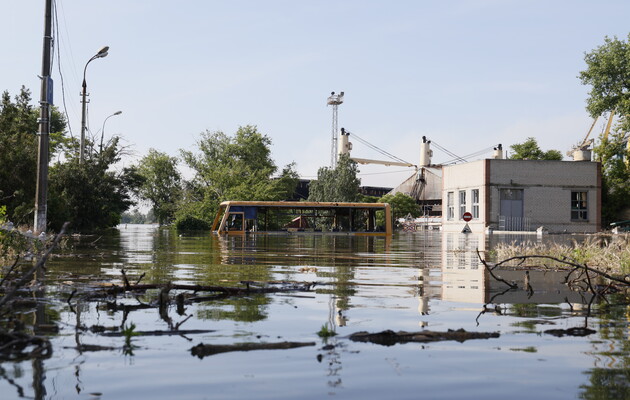Is reconstruction of the Kakhovkа HPP necessary?

The answer to this urgent question requires a thorough analysis of the main aspects of solving this problem. There are four of these main aspects, namely energy, transport, water management and ecology.
In the 1950s, the main priority of the Kakhovka HPP construction was energy. However, over 70 years, the situation in the energy industry has changed radically. In Europe, the energy reason for which hydropower plants were built long ago and irrevocably lost not only priority, but also relevance. During this time, carbon-free energy carriers were replaced by renewable ones. In the European Union, the share of electricity from renewable sources (without hydroelectric power plants) has reached 35%, and by 2030 it should reach 50-55%. However, the most important thing is that the trends in the cost of a unit of electricity from renewable (without hydroelectric power plants) and non-renewable (coal together with nuclear power plants and hydroelectric power plants) sources are opposite: the former – to decrease with acceleration, the latter – to increase.
To an even greater extent, this is characteristic of the return on investment: in green energy (from renewable sources), the payback index increases with acceleration, in carbon, nuclear, and hydro-engineering, it falls significantly.
The Russian-Ukrainian war also led to the decentralization and localization of the energy industry. In addition, the current state of affairs in our country determined the placement of energy centers in Ukraine in different territories, rather than in one place. It should also be noted that green energy produced from renewable sources is best adapted to these processes.
Hence, it is obvious that investing in the construction, reconstruction or modernization of hydroelectric power plants for energy purposes contains great risks for the project's profitability. That is, the energy aspect of rebuilding the Kakhovka HPP is depreciating and losing its perspective.
This fully applies to the transport aspect. In the middle of the 20th century, the construction of hydroelectric power stations on the Dnieper River, especially in the area of rapids, in order to increase its transport capacity, was relevant. However, river transport is losing its leading positions everywhere. Road transport is increasingly coming to the forefront, which has no alternative in terms of the level of satisfaction of consumer requirements, especially in terms of accessibility and convenience for mass consumers. The Dnieper water transport corridor is multi-gateway, long, and too local. Therefore, investing in the construction of locks (an integral part of dams) is as unpromising for transport purposes as the construction of dams themselves for energy purposes.
The water management aspect is a completely different matter. Its relevance is constantly growing and it is becoming the main one. If both previous aspects (energy and transport) have a promising and effective alternative, then the water management one has no alternative. After all, there are no other prospects for water replacement. On the contrary, in the vast majority of countries of the world, including in Europe, in particular in Ukraine, there is only one prospect, namely water shortage. Therefore, the search for sources of water supply and ways of rational use of water is becoming more and more important. That is why the water management aspect of the restoration of the Kakhovka Reservoir is the highest priority.
The radical shift of emphasis from the energy and transport aspects of the rebuilding of the Kakhovka HPP to the water management one fully meets the environmental requirements. After all, if the energy and transport aspects were competitors of the environmental aspect, then the water management aspect, on the contrary, harmonizes with it and enters into synergy with it. Therefore, reconstruction of the Kakhovka HPP is necessary, but it should be reoriented (reprioritized) to the restoration of the reservoir as much as possible. Then the energy and transport aspects will also receive further development, but they will not be the main ones, but secondary ones.
However, the water management (and with it the ecological) aspect puts forward new requirements for the restoration of the reservoir. These are primarily economic, water management requirements. It is, in particular, about limiting (reducing) the flooding of the area with water, increasing the volume of water intake and water filling. In addition, there is a demand to improve the natural functioning of the reservoir (flora, fauna, water purity, ecology, etc.), to significantly improve the water supply of the economy and the life of the population with water. It is important to note that creating an extensive water distribution network and increasing the efficiency of water use is also becoming an important aspect of the restoration of the reservoir.
The main thing in this matter is to dump a minimum of Dnieper water into the sea. Here, a comparison with the well-known saying of scientists about oil is appropriate: "To burn oil is equivalent to burning appropriations." So dumping fresh water into the salt sea is tantamount to destroying the currency. After all, due to the expansion and improvement of the efficiency of irrigation of agricultural lands in the zone of possible reach of the Dnieper water, which is 300-400 km, the harvest of agricultural crops can be increased by 1.5-2 times, and the export of food products - by 3-4 times. This is the same currency that has a water origin. The price of water is well known in many countries with an arid climate, where, as a rule, there is a constant and acute shortage of food, malnutrition and hunger of the population.
This is confirmed by world experience. Thus, more than half of the known agricultural export potential of the Netherlands is produced due to areas freed and protected from flooding. In northern Germany, thanks to the construction of the Elbe dams, it was possible to increase the production of agricultural products by a third. There are similar examples in Ukraine, both positive and negative. Thus, the construction of the left bank dam (about 70 km) of the Kyiv Reservoir protected dozens of villages and thousands of hectares of farmland from flooding. And the absence of such a dam on the Kremenchuk Reservoir, on the contrary, led to the displacement of more than a hundred villages and the loss of hundreds of thousands of agricultural lands. In addition, the ecology of the reservoir suffers from large-scale coastal shallow water. By the way, the mentioned aspect in the question regarding the Kakhovka Reservoir is very relevant for the future modernization of the Kremenchuk Reservoir. In this case, the efficiency can be many times higher.
The construction of coastal dams is of great importance for the modernization of the Kakhovka Reservoir. Their goal is to significantly limit shallow water spillage, increase the volume of the water basin, and "rehabilitate" the functioning of the reservoir. Thanks to this, agricultural, forestry and other use of the areas freed from water, equal to 50-70 thousand hectares, is possible. At the same time, due to the construction of coastal dams and the raising of the main storage dam, it is possible to double the volume of the effective (used) water supply. Thanks to this, it is possible to significantly expand the network of water supply channels for cities and villages, for the population and irrigation of agricultural land. It is in the field of water management that it is possible to achieve the greatest benefits from the reconstruction of the reservoir in terms of scale and efficiency. At the same time, efficiency can be significantly increased in the energy sector thanks to the modernization of power units, which has been planned for a long time, the increase in the number of turbines and the increase in water pressure on them.
Thus, the benefit from the reconstruction of the Kakhovka HPP with an emphasis on priority and complex modernization of the reservoir can provide a quick return on investment and their high overall economic return on profit. Undoubtedly, the source of monetary investment should be, first of all, financial compensation from the Russian Federation for the destroyed hydroelectric power station, dam, reservoir and the resulting ruin for the economy, ecology and population in general. However, without waiting for a solution to the issue of compensation, such a conceptual approach can be very investment attractive for representatives of the World Bank, the European Bank for Reconstruction and Development (EBRD), the International Bank for Reconstruction and Development (IBRD) and other institutions. This is in line with the goals of the United Nations (UN) to fight world hunger and promote sustainable development. In addition, this approach corresponds to the interests of Ukraine in obtaining a synergistic effect from an innovative approach to the restoration of the economy destroyed by Russian aggression. Thus, Ukraine will win not only at the front, but also in the future competition with the Russian Federation in the spheres of economy and social development.
Read this article in russian and Ukrainian.
Please select it with the mouse and press Ctrl+Enter or Submit a bug














 Login with Google
Login with Google